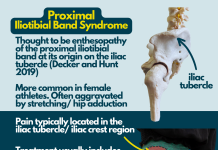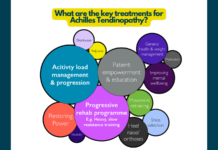Our articles are not designed to replace medical advice. If you have an injury we recommend seeing a qualified health professional. To book an appointment with Tom Goom (AKA ‘The Running Physio’) visit our clinic page. We offer both in-person assessments and online consultations.
A runner’s gait can be a piece of the injury puzzle, especially if it’s placing more stress on sensitive tissues. This can be the case in Proximal Hamstring Tendinopathy (PHT) so let’s explore 3 key things to look out for when assessing a patient’s running.
- Increased forward trunk lean – this is likely to load the hamstring tendons in a more stretched position which can be provocative for symptoms.
- Excessive anterior pelvic tilt – having an anterior pelvic tilt during running is normal. In fact, it’s very hard to run in a posterior tilt! In some cases though it can be a little excessive and placing more stress on the proximal hamstring region.
- Over-striding – number 3 on the list but arguably the most important. Over-striding can increase the demand on the hamstrings and load the tendon in a more uncomfortable position. It’s often associated with a low sep rate (cadence).

I previously had PHT which has now resolved. I displayed all 3 of these in my running gait:

For more on PHT, these gait findings and how to address them watch our free video below:
Follow me on Instagram, Facebook and Twitter for more on running injuries and how to treat them. Prefer LinkedIn? I’m on there too! Click here to connect.









